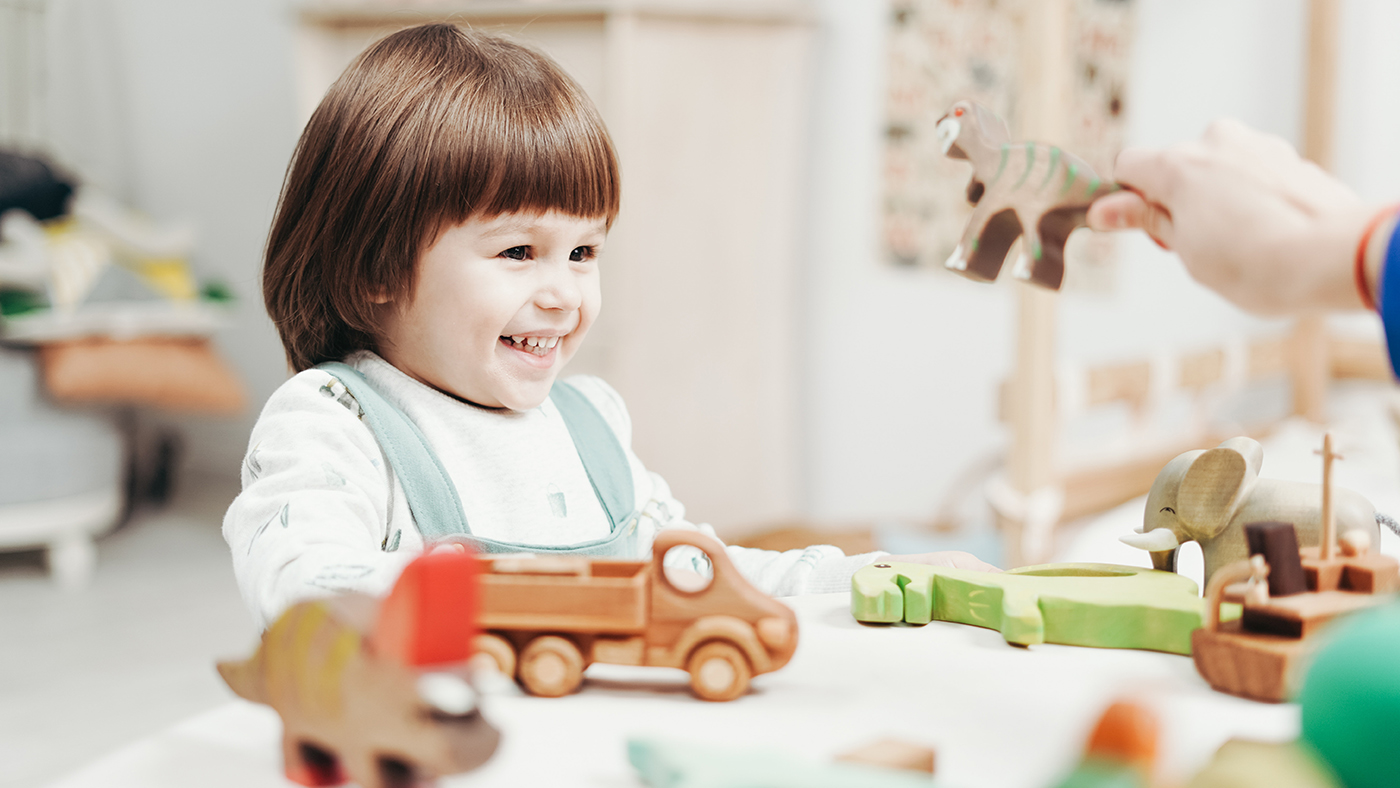Recreates familiar situations with toys

You might have noticed your child copying you and others for a little while, now they will be starting to imitate familiar situations when they play with their toys. You might notice them putting their toy cars to bed or giving a teddy a meal.
Pretend play and social development
Copying others is one of the ways in which we all learn new skills and your child will copy those around them when learning about how to interact with other people. They will also use copying to explore familiar situations and to try out different roles in a particular situation. When your child first begins to engage in pretend play it is likely this play will be ‘simple pretend play’. Simple pretend play is based on observation and experience rather than imagination, your child will simply recreate situations they have seen and will not think about the thoughts or intentions of the people they are copying.[1] It is thought that pretend play helps children understand their own thoughts and feelings and begin to recognise that other people might have different feelings and ideas.[2]
Early pretend play is often supported by adults or older children, this might be by an adult modelling pretend play, so you might pick up a doll and rock it or push a toy car along an imaginary road. When your child is with you as you do everyday tasks such as sweeping the floor or making a meal they will watch and might imitate these activities at another time when they play.[3] Pretend play could be seen as having an important role to play in your child understanding the world around them and the tasks that people carry out. Research suggests that pretend play is not universal and tends to be more common in cultures where children and adults have more separate social worlds.[3]
Pretend play, language and cognitive skills
Pretend play has also been linked with the development of executive functions including self-regulation and inhibition control. When your child pretends, they have to put their understanding of an object to one side and focus on their imagined representation of the object. This pretense involves them thinking about their thoughts and being able to change the focus of what they are thinking about, so they think about the pretend representation rather than the real object.[2] For example, your child might pick up a block, hold it to their ear and begin to speak. They know that a block is a block but as they play the focus is on what the block represents in their play, so it is a phone and they imitate the type of speech they have heard when people have spoken to others on the phone.
Pretending is often considered to be linked to other forms of representation such as language. When your child pretends, they are using objects to represent different objects and some researchers link this representation with the development of language. When speaking your child uses words as symbols for objects and actions and some researchers suggest that the development of speech and pretend play are linked.[2]
What next?
Your child will begin to recreate longer sequences in their play, for example, they might feed a teddy, then wash its face, then put it to bed. They will begin to pretend one object is something else even when the objects have fewer features in common and will involve other people in their play.
References
[1] Macintyre, C. (2017). Enhancing Learning through Play. London: Routledge.
[2] Goswami, U. (2020). Cognitive Development and Cognitive Neuroscience (2nd edn.). London: Routledge.
[3] Meyers, A.B. & Berk, L.E. (2014) Make believe play and self-regulation. In Brooker, L., Blaise, M. & Edwards, S. (Eds.). SAGE Handbook of Play and Learning in Early Childhood. (43-55). London:Sage.